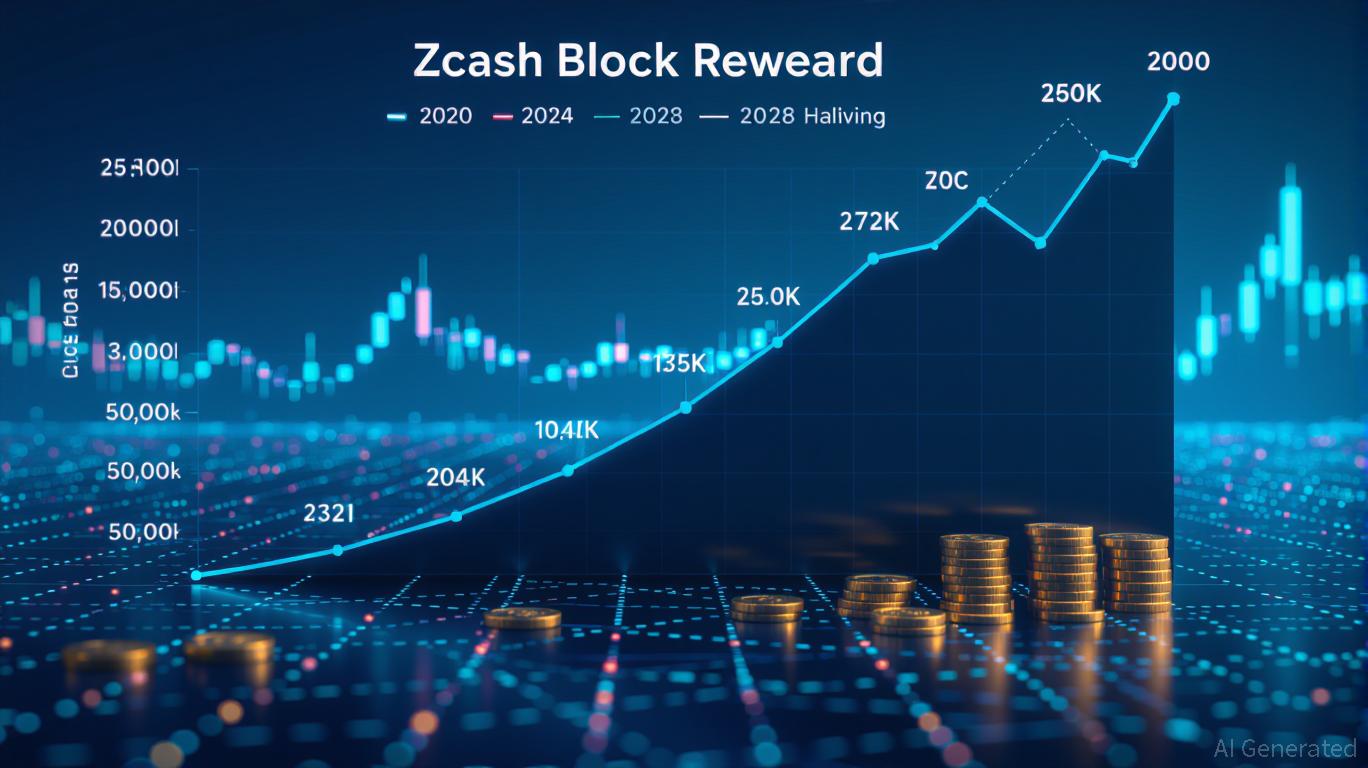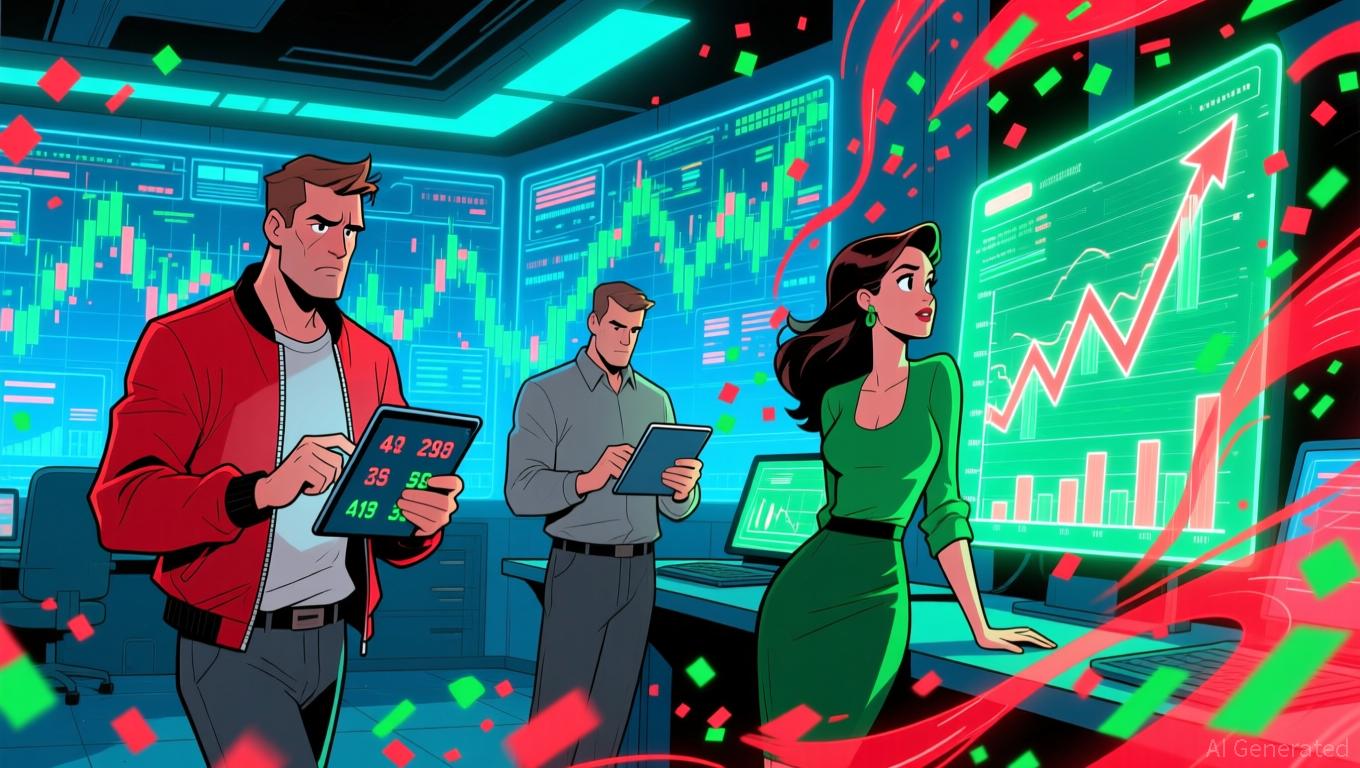Zcash Halving 2025: Impact on Cryptocurrency Markets and Investment Approaches
- Zcash's next halving in late 2028 will cut block rewards to 0.78125 ZEC, accelerating its 21M supply cap. - Historical data shows 500%+ price surges post-halving, driven by scarcity and growing institutional adoption like Grayscale's $137M Zcash Trust. - Privacy-focused demand and counter-cyclical price trends highlight Zcash's unique role, though regulatory risks to shielded transactions persist. - Investors are advised to balance long-term positioning with diversification and monitor utility-driven upg
Blockchain Economics: Limiting Supply and Miner Motivation
Zcash implements a halving every four years, slashing block rewards by half after every 1,680,000 blocks are produced
While Zcash’s deflationary approach is similar to Bitcoin’s, it also introduces its own unique factors. By reducing the rate at which new coins are created, Zcash will see its annual inflation rate drop from 6.25% after 2024 to 4% by the end of 2025

Speculative Demand: Past Trends and Institutional Influence
Looking back, there is a notable link between Zcash halving events and significant price increases. The 2020 halving triggered a 500% surge in value, while the 2024 halving led to a 92% jump by the last quarter of 2025
Greater institutional involvement has also fueled speculative interest. The introduction of the $137 million Grayscale Zcash Trust in 2025
Market Behavior: Divergent Trends and Regulatory Challenges
Zcash’s price movements often contrast with Bitcoin’s, especially during bearish markets. In late 2025, ZEC climbed 750% as investors turned to privacy coins while Bitcoin experienced turbulence
Privacy coins like Zcash continue to face uncertain regulatory environments. Although the SEC’s 2025 decision to exempt PoW mining from securities regulations
Investor Strategies: Key Points to Consider
For those investing in Zcash, understanding the interplay between limited supply, speculative forces, and regulatory uncertainty is essential. Recommended approaches include:
1. Long-Term Holding: With Zcash’s supply steadily decreasing, maintaining positions through multiple halving cycles could offer cumulative returns.
2. Portfolio Diversification: Spreading investments across Zcash and other privacy coins or
3. Tracking Network Developments: Innovations like Zashi and CrossPay may drive demand based on utility, independent of speculative trends
Conclusion
Zcash’s halving cycle provides valuable insight into both blockchain economics and speculative market behavior. Although the next halving is slated for 2028, the aftermath of the 2024 event—characterized by institutional participation and price stability—demonstrates Zcash’s promise as a privacy-oriented asset and a potential store of value. Investors should carefully balance these opportunities with the risks posed by regulatory shifts and market volatility, ensuring their strategies are in step with broader economic trends and the ongoing evolution of the Zcash ecosystem.
Disclaimer: The content of this article solely reflects the author's opinion and does not represent the platform in any capacity. This article is not intended to serve as a reference for making investment decisions.
You may also like
Post-FTX digital asset exchanges simplify futures offerings to comply with regulatory requirements
- Binance delisted RUNEUSD futures to align with post-FTX regulatory demands and evolving user preferences. - The move follows industry-wide transparency efforts like proof-of-reserves initiatives after FTX's 2022 collapse. - Post-FTX trends show growing demand for DeFi solutions and institutional-grade crypto products with enhanced compliance. - Challenges persist in balancing innovation with regulation as exchanges like Binance recalibrate strategies amid shifting market dynamics.

Bitcoin News Update: Bitcoin's Death Cross and Global Political Strains Raise Bearish Concerns, Yet Institutional Activity Inspires Optimism
- Bitcoin's recent $105,000 drop triggered bearish signals like the "death cross," raising concerns about a prolonged downturn amid weak institutional/retail demand. - ETF data shows mixed investor sentiment, with $1.1T inflows in U.S. Bitcoin ETFs but $2.5B outflows from Grayscale's Mini Trust, highlighting market fragmentation. - U.S.-China Bitcoin dispute over 127,000 stolen coins and frozen liquidity exacerbates uncertainty, while DeFi integration and miner diversification offer structural support. - A

Bitcoin News Update: Institutions Reduce Bitcoin ETF Holdings, Boost Solana Investments Amid Rising Altcoin Interest
- Bitcoin ETFs saw $870M outflows as institutions offloaded positions amid macroeconomic uncertainty and profit-taking pressures. - Ethereum ETFs lost $438M while Solana-based products bucked trends with $118M inflows, reflecting growing institutional demand. - U.S. ETFs recorded $1.22B outflows, contrasting Germany/Switzerland inflows and gold/energy sector gains of $363M and $427M respectively. - SEC's in-kind redemption rules reshaped institutional Bitcoin ETF participation, with Blackrock's IBIT holdin

Polygon and R25 Tackle DeFi Transparency Issues with rcUSD+ Yield Token Designed for Institutional Use
- Polygon partners with R25 to launch rcUSD+, a yield-bearing stablecoin backed by real-world assets like money market funds. - The token generates institutional-grade returns through low-risk investments, addressing DeFi's opacity with transparent asset verification. - rcUSD+ serves as a collateral layer for Polygon-based apps, enabling developers to build RWA-linked DeFi instruments with standardized yield generation. - The integration aligns with rising institutional demand for tokenized assets, leverag
